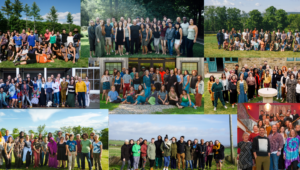Steve Blank wrote an interesting article in the May Harvard Business Review on “Why the Lean Start-Up Changes Everything.” The lean start-up refers to a methodology (more on that shortly) rather than an organization of a specific structure or size. While its roots are in the technology field, the methodology has interesting implications for arts and culture organizations.
This approach focuses on three key things. Rather than crafting an elaborate business plan, entrepreneurs use a conceptual framework known as the business model canvas, a way to capture nine critical elements of the organization and the hypotheses that underlie their business model (summarizing hypotheses). The second pillar is a keen focus on customer development: getting in front of as many potential customers and partners possible to test their hypotheses. Speed and nimbleness are valued over complete information or perfection. The goal is to create a “minimum viable product” which is put in front of potential customers for further feedback and improvement (testing hypotheses). The third leg of the stool is “agile development.” The product is incrementally and iteratively developed on a continual basis.
There are both commonalities and disjunctions (perhaps more of the latter) between the lean start-up methodology and the preponderance of management practices in the arts and culture field. Certainly, few cultural organizations – regardless of their life cycle – were founded with detailed business plans in mind, if one at all. A bias towards experimentation rather than elaborate planning will be familiar to many organizations, if more common on the artistic side than the administrative. The notion of a “minimum viable product” will be understandably antithetical to most mission-driven cultural organizations.
What do you think? Do we have something to learn from the “lean start-up” approach? Are there aspects of this approach that are already central to the way your organization runs?




